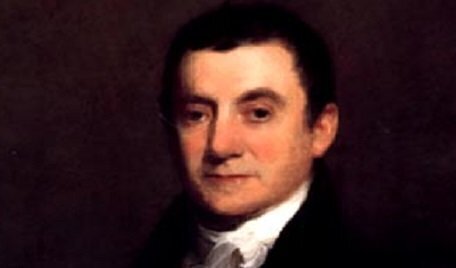The current controversy over Merrick Garland’s nomination has nothing on the longest Supreme Court delay of all time during John Tyler’s rocky presidential term. Currently, it has been 256 days since the passing of Justice Antonin Scalia on February 13, 2016. If Scalia’s replacement is confirmed after January 2, 2017, the delay would be 324 days at a minimum.

According to a Pew Research report, that would put the delay as the eighth-longest period for a Justice to be replaced on the court. Next on the list would be the 391-day period it took for Abe Fortas to be replaced by Harry Blackmun between May 1969 and June 1970.
With the exception of the Fortas replacement, the longest replacement periods took place in the 19th century, and the longest of them all was the 841-day period to replace Justice Henry Baldwin, who died on April 21, 1844 while visiting Philadelphia. Baldwin was known as a maverick on the Court who also help to start the practice of writing dissents. (He also offended Justice Joseph Story to the point where Story wrote that Baldwin was “partially deranged.”)
Robert C. Grier finally took the oath to replace Baldwin on August 10, 1846, after more than two years of nomination drama and a change of administrations. At the time of Baldwin’s death, President Tyler was estranged from most of the Washington political structure. In fact, the Whig Party, which Tyler represented as a vice presidential candidate in the 1840 election, expelled Tyler as a member in 1841.
Without congressional support, Tyler still sought to fill two Supreme Court vacancies. In all, Tyler made nine attempts to get a nominee confirmed, and he succeeded once.
Justice Smith Thompson had died in December 1843 and Tyler was able to get his replacement, Samuel Nelson, confirmed in February 1845 after a 437-day period. But it took six attempts for Thompson’s replacement to be confirmed.
In Baldwin’s case, it would be President James K. Polk who finally got a nominee approved, but well into Polk’s only White House term. The Whigs, Tyler’s former party, controlled the Senate and they wouldn’t consider two replacements for Baldwin offered by Tyler after April 1844.
Edward King was nominated twice by Tyler to replace Baldwin. The first nomination was tabled by the Senate. King was nominated a second time after the 1844 presidential election in a lame-duck session, but King’s nomination was withdrawn. Tyler then nominated John Meredith Read (to replace Baldwin) and Nelson (to replace Thompson) in February 1845. No Senate action was taken on Read’s nomination, while Nelson was confirmed.
When Polk took office the following month, he also failed in his first attempt to replace Baldwin. President Polk nominated George Woodward of Pennsylvania in December 1845. However, Woodward had made comments about tariffs and immigration that offended Senate Democrats and Whigs, and his nomination was rejected by a 29-20 vote.
Polk next turned to his Secretary of State, future President James Buchanan, as a potential nominee. Buchanan considered the offer and then declined. Polk finally chose Grier, a relatively obscure judge from western Pennsylvania as his second choice to replace Baldwin. The Senate confirmed Grier’s nomination on August 10, 1846, by a voice vote. Grier went on to serve for 23 years on the Court. William Strong eventually replaced Grier when he retired in 1870.
For the record, the next longest nomination delay was 781 days for the replacement of Justice Peter Daniel, who died in May 1860. President Buchanan offered his Secretary of State, Jeremiah Black, as his nominee to replace Daniel, but the nomination failed by one vote in the Senate in February 1861. Samuel Miller was nominated by President Abraham Lincoln after the start of the Civil War in July 1862 and confirmed quickly once the nomination was presented to the Senate.







